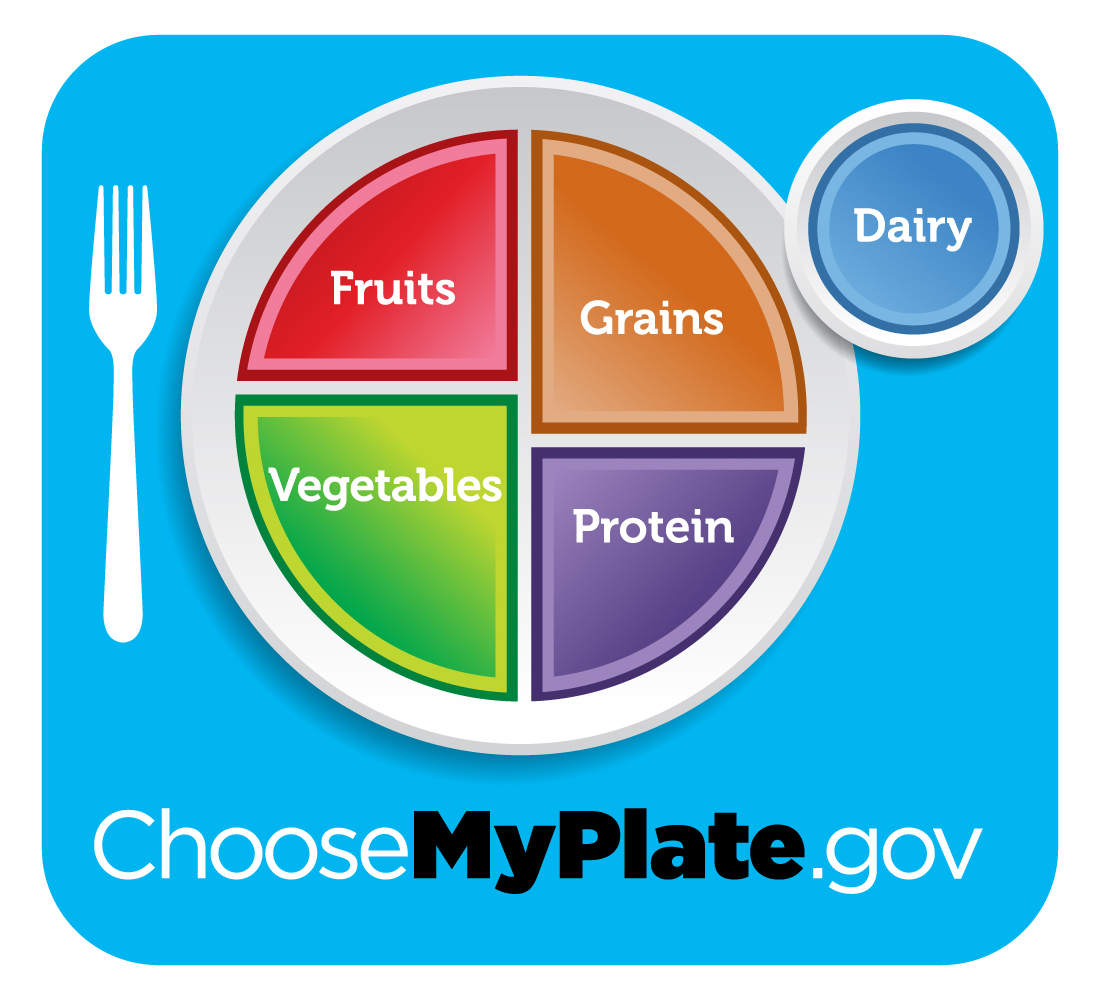By Monika Frauzem, dietetic technician, registered at CHOC
It’s back to school time and that means thinking about lunches to go! Lunch provides nutrition for your child’s school day. A good nutritional foundation will support learning and deliver the energy needed for play time. The good news is that preparing school lunches does not have to be a chore! You can make this quality time spent with your child and a positive learning experience.
Here are some things to think about when planning lunches and meals:
Get informed
The MyPlate model designed by the United States Department of Agriculture shows the ideal balance of nutrients you should strive for at every meal. Which food group some of your favorite foods fit into might surprise you.

Get inspired
The CHOC Kids Health blog is filled with healthy and fun recipes that are sure to please kids and parents alike.
Get organized
- Include meal planning into your weekly schedule. Sit down with your child and agree on a time that will work for everybody involved. CHOC offers healthy meal prep tips for busy parents.
- Create a menu for the week and make a grocery list.
- Create a master list of lunch options to use if time is limited or life gets in your way.
- Get containers in various sizes and make sure containers are easy to open—especially for younger children. Consider the environment, and remember that reusable containers are better for the environment and cheaper in the long run. There are many innovative options available.
- Buy produce that is in season in bulk—it’s good for your budget and your body!
- Create snack stations in the fridge and pantry for easy access for hungry kids after school and when you are in a hurry assembling lunches.
Include your child in the process
- Take your child with you to the grocery store, and read nutrition labels together when deciding which items to buy.
- Match portions to your child’s age and appetite. Your child may prefer multiple snack-sized portions rather than one big lunch item.
- Take your child grocery shopping with you.
When creating meals, it is important to include all food groups. It will help your child feel full longer and have the energy they need to say alert throughout the day. The main idea is to combine protein, complex carbohydrates (such as grains), fruits, vegetables and healthy fats. Variety is the key. Remember: Have your child help! If your child participates, he or she is more likely to eat their lunch.

What Nutrients Does My Child Need?
Protein
Growing children need protein because it is an important component for bones, skin and muscles. Foods that are good sources of protein include: cottage cheese, Greek yogurt, yogurt, string cheese, turkey or chicken for wraps or roll ups, eggs (such as hard-boiled eggs or egg salad), tuna- or salmon salad, peanut or other nut butters, tofu, edamame, beans, lentils and hummus.
Grain
Grain provides carbohydrates, fiber, minerals and vitamins. Read labels and choose 100 percent whole grains when possible. Carbohydrates give your children the energy they need to learn and play. Read labels to limit the amount of added sugar and unhealthy fats. Healthy grain options include: whole-grain bread, flatbread, pita pockets, bagels, tortillas or English muffins; crackers, pretzels, cracker bread and rice cakes; cooked brown rice, barley, couscous and quinoa; granola bars; whole grain cereals.
Vegetables
Vegetables are a good source of carbohydrate, minerals, vitamins and fiber. You may include a dip such as low-fat salad dressing, bean dip or hummus. Try to get a variety of colored vegetables as these provide different nutrients. Some options include: broccoli, cauliflower, sweet potatoes, jicama, sugar snap peas, carrots, celery, kohlrabi, beets, bell peppers, corn, cucumber, tomatoes and spinach
Fruit
Fruit is a good source of carbohydrate, minerals, vitamins and fiber. Just like with vegetables, serve a variety from all the color groups because they contain different vitamins and minerals. Some ideas include: olive oil, vegetable oils, canola and sunflower oil, avocado, cheese, nuts, sour cream, butter, mayonnaise and salad dressings
Remember, the lunch your child takes to school should be one they will actually eat and not one you want them to eat.
Sending your child to school with a nutritious lunch can be a rewarding experience for everyone! With a little planning and organization, it doesn’t need to be a hassle. Pack lunches the night before so they are ready to go before the morning rush.
Include your child in the process. There may be times when they want the same lunch multiple days in a row and times when their taste changes. Just offer a variety of foods and options during the other meals of the day.
Get more expert health advice delivered to your inbox monthly by subscribing to the KidsHealth newsletter here.
Learn more about CHOC’s Clinical Nutrition Program
At CHOC, we specialize in providing a full continuum of pediatric nutrition services, including inpatient and outpatient services, depending on our patients’ needs.





